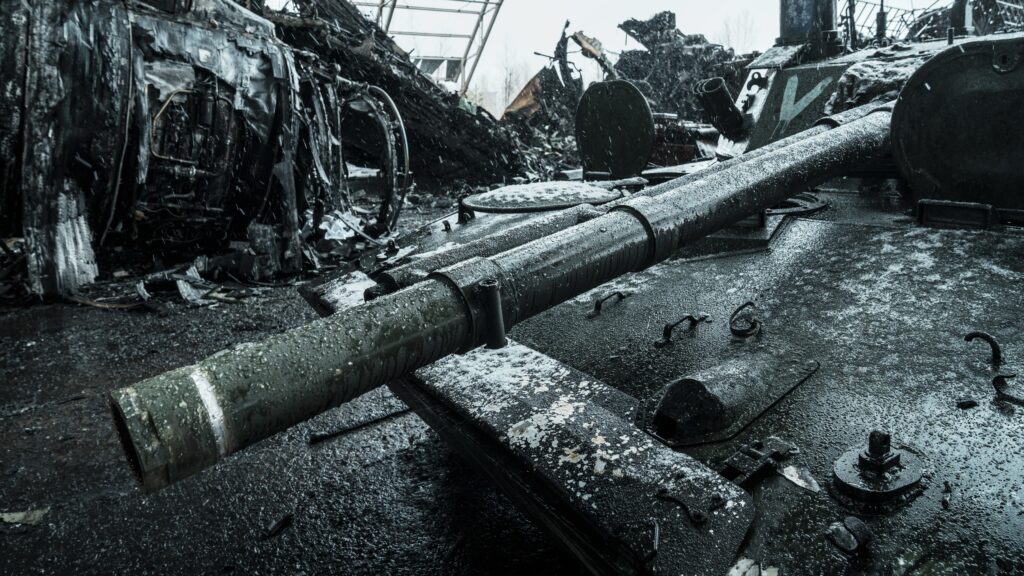
Destroyed Russian military vehicles near Ukraine’s Hostomel Airport on March 03, 2022 (Photo by Serhii Mykhalchuk/Global Images Ukraine via Getty Images)
LANPAC 2022: The future of land warfare may not be hordes of missile raining down on an opposing force, crushing it and giving the attacker the advantage. Instead, the war in Ukraine may demonstrate that the advantage has swung to the defender, who can strike from hiding using tactical weapons in part because of the power of drone surveillance.
Maj. Gen. Scott Winter, commander of Australia’s 1st Division, told the more than 2,000 attendees at AUSA’s Pacific Land Warfare Conference that land warfare now increasingly resembles the island hopping strategy America followed in the Pacific during World War II. Drones create what he called “massive no-man’s lands,” stretching thousands of kilometers. Major attacking forces then get struck by smaller units hiding in urban areas, and suffering losses and disruptions to their crucial supply lines as they move between cities, tracked all the way by unmanned cameras in the sky.
Russia’s struggles in Ukraine may be the most recent, visible example of this dynamic. But Winter pointed to the Nagorno-Karabakh conflict, the Czechen war and the rolling up of ISIS in Iraq — even going back to the first Gulf War in 1991 — as examples of this shift.
“We’ve seen recently, in particular, on our television screens and what’s happening in Ukraine, that forces stuck in the open are easily picked off and destroyed,” Winter said in a panel on the strategy environment in the Indo-Pacific. “So the challenge is not just to cross vast open spaces in all these lands, but to avoid or minimize the time spent there.”
As a result of this shift, “Cities are somewhat becoming the modern day battlefields for land forces.” This means, he said, militaries need to expect hard close-quarter fighting, principally by infantry forces.
RELATED: Three reasons why defense is beating offense in Ukraine – and why it matters for Taiwan
This shift in effectiveness from large and expensive weapons like fighters and submarines, able to traverse vast spaces with speed, to hand-held anti-tank and anti-aircraft weapons used by land forces has longer term implications for governments and militaries, said the outgoing head of Australia’s Army, Lt. Gen. Richard Burr in a later discussion.
“Ukraine has shown that shaping and deterrence can fail, that assumptions can be wrong and that events can take on a life of their own. It shows the character of warfare may have changed, but its nature has not,” Burr said. “It has reinforced the utility and centrality of being strong, capable and integrated in all domains. But when fully integrated, effectively, land power is a substantial force multiplier to generate military and national power.”
Another “vital lesson,” the head of Army noted, “is the value of partnerships and shared interests in defending [a nation’s] sovereignty.” This has led the United States, the European Union, Australia and other countries to provide weapons and other assistance to Ukraine. In Australia’s case they have rushed 20 light armored Bushmasters to Ukraine, as well as substantial quantities of nonlethal aid for a total of almost $300 million.






















